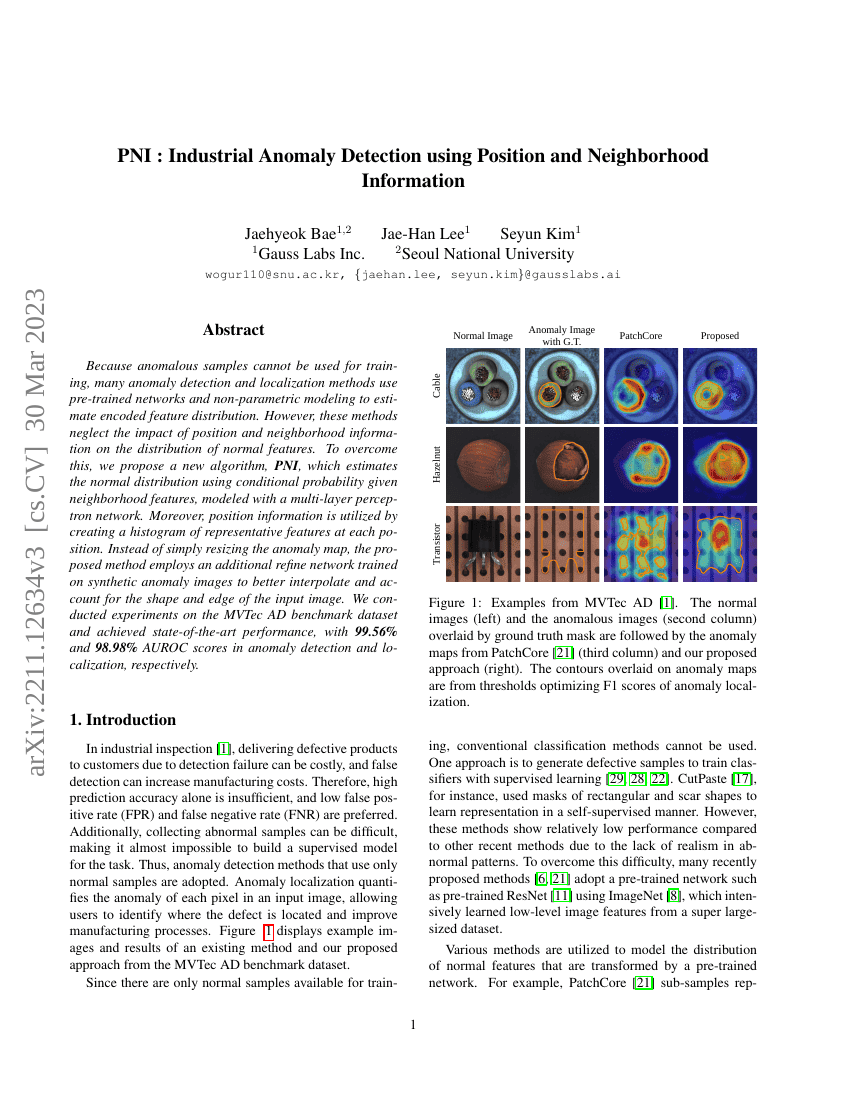Command Palette
Search for a command to run...
PNI : Industrial Anomaly Detection using Position and Neighborhood Information
Jaehyeok Bae Jae-Han Lee Seyun Kim

Abstract
Because anomalous samples cannot be used for training, many anomaly detection and localization methods use pre-trained networks and non-parametric modeling to estimate encoded feature distribution. However, these methods neglect the impact of position and neighborhood information on the distribution of normal features. To overcome this, we propose a new algorithm, \textbf{PNI}, which estimates the normal distribution using conditional probability given neighborhood features, modeled with a multi-layer perceptron network. Moreover, position information is utilized by creating a histogram of representative features at each position. Instead of simply resizing the anomaly map, the proposed method employs an additional refine network trained on synthetic anomaly images to better interpolate and account for the shape and edge of the input image. We conducted experiments on the MVTec AD benchmark dataset and achieved state-of-the-art performance, with \textbf{99.56\%} and \textbf{98.98\%} AUROC scores in anomaly detection and localization, respectively.
Code Repositories
Benchmarks
| Benchmark | Methodology | Metrics |
|---|---|---|
| anomaly-detection-on-btad | PNI | Segmentation AUROC: 97.8 |
| anomaly-detection-on-mvtec-ad | PNI | Detection AUROC: 99.56 Segmentation AUPRO: 96.05 Segmentation AUROC: 98.98 |
| anomaly-detection-on-mvtec-ad | PNI Ensemble | Detection AUROC: 99.63 Segmentation AUPRO: 96.55 Segmentation AUROC: 99.06 |
Build AI with AI
From idea to launch — accelerate your AI development with free AI co-coding, out-of-the-box environment and best price of GPUs.